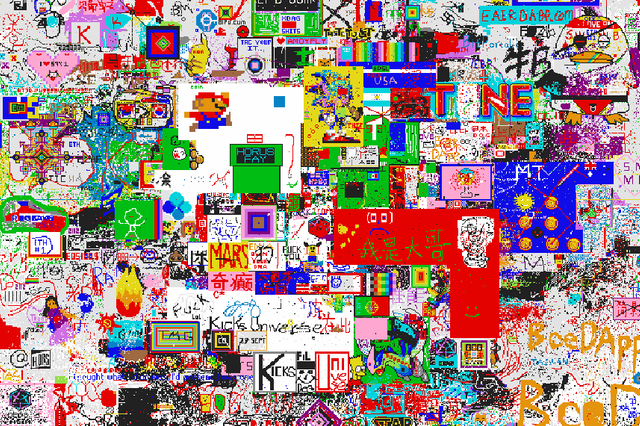
Ethereum, a blockchain platform for building decentralized applications (dApps) has produced a multibillion-dollar industry that held the promise of creating a new generation of “unstoppable” apps. Most of the dApps that have launched thus far have gotten off to a slow start. FOMO3D, a widely known overt crypto ponzi scheme, was a major exception. At its peak, it was responsible for 150,000 Ethereum transactions a day.
Cryptograffiti, a new form of art.
Pixel Master, incorporates similar elements of game theory and incentive structuring to create a virality effect in the same manner. Pixel Master is essentially an online graffiti board where users pay in EOS (another cryptocurrency with higher throughput) to be able to paint pixels on an open canvas. As of the time of writing and 3 days since the launch of this app, the canvas has a value of 35,000 EOS ($193,000). The center pixel stands at a price tag of 1,350 EOS ($7,400).
Online canvases are not new to the internet. Reddit had one with over 1 million unique users, and another was created utilizing Bitcoin’s lightning network for micropayment for painting pixels.
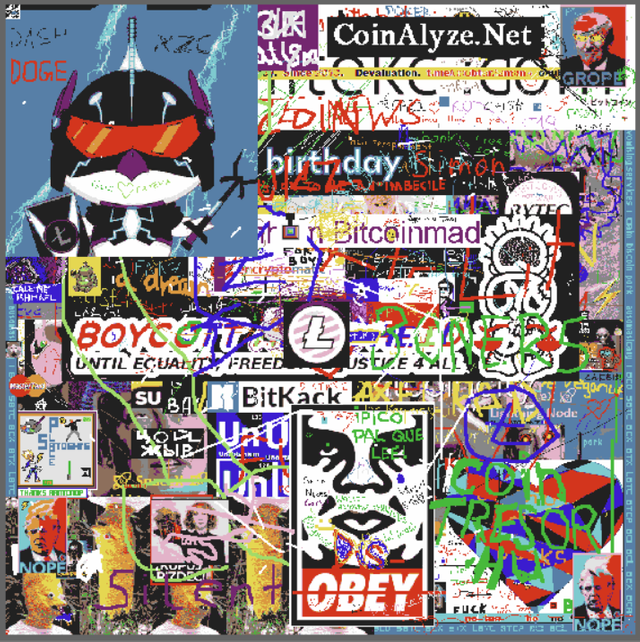
Satoshi.Place
The difference with Pixel Master, is that users can get rewarded. and that is a very powerful thing. Users can pay a set price to paint a pixel on the canvas. That includes painting over other people’s previously painted pixels. The person that paints over your pixel needs to pay 35% more than you did. You receive a full refund of your initial purchase, PLUS 75% of the extra 35% they paid. The 25% remaining from the extra 35% gets allocated in a variety of different ways.
There are four different ways users can be rewarded:
- Someone paints over a pixel you painted
- Continuous rewards are received based on pixels painted (Patron Bonus)
- Referral rewards
- Last Pixel Prize
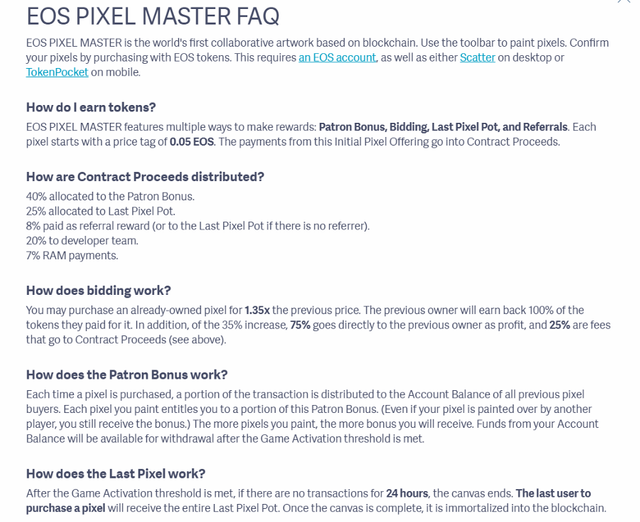
All of these reward mechanisms either encourage engagement or evangelism in some way. Breaking it down from the list above:
- Users are incentivized to create drawings, particularly, ones that they think will be further drawn over & recruit others to increase the chances of this happening
- Users are incentivized to purchase as many pixels as possible & recruit others such that more rewards are dispersed
- Users are rewarded directly for purchases the people they refer make (like the author is doing with this article ;) )
- Since the Last Pixel pot will always be greater than the cost of any pixel, there will always be a monetary incentive to maintain engagement in the system
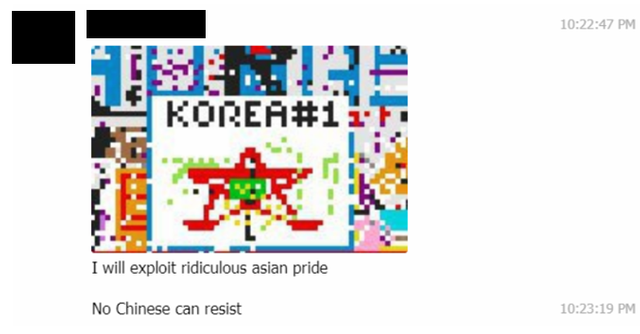
Serious strategizing in the Official Telegram Group
The real beauty is that by adding this layer of refunds and profits to an existing application, you can create powerful network effects (slightly different from the ones Silicon Valley VCs envisioned with dApps/dNetworks). The more people that play, the faster the rewards come, and the more evangelists there will be. That is, until the game becomes prohibitively expensive to everyone except the well-capitalized groups/individuals competing to win the last pixel pot.
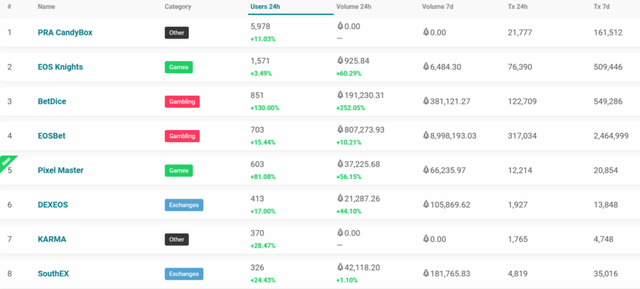
dappradar.com
Currently, Pixel Master is the 5th most widely used dApp on EOS after 3 days of being released. This is not an anomaly. It’s a lesson that proper application of game-theoretic mechanisms can result in strong, fast adoption. This is not the first or last time we will see the creation of this type of incentive layer around a pre-existing semi-popular application. I call it Ponzification.
When it came to FOMO3D, there was speculation that due to ever resetting prize clock that eventually the game would suck all the Ethereum out of the market. This didn’t come to fruition because a user was able to exploit the blocks in the Ethereum network long enough to win the game. The timer for FOMO3D was one minute. For Pixel Master, its 24 hours. At time of writing, the person to place the last pixel stands to win 7,100 EOS ($39,000). This number will without a doubt increase exponentially over the next few weeks. The increased time limit, coupled with the higher throughput nature of the EOS blockchain make a drain of EOS coins a non-zero possibility.
If you want to draw your own masterpiece using the EOS network, you can do so here.
Disclaimer: Players are not entitled to a guarantee of receiving refunds for the EOS they spend
Thank you to Daniel Armitage for proofreading this article.